These graduates throw themselves, not caps, in the air
Scouts from Russia and beyond hunt for talent at the year-end Moscow Circus School shows
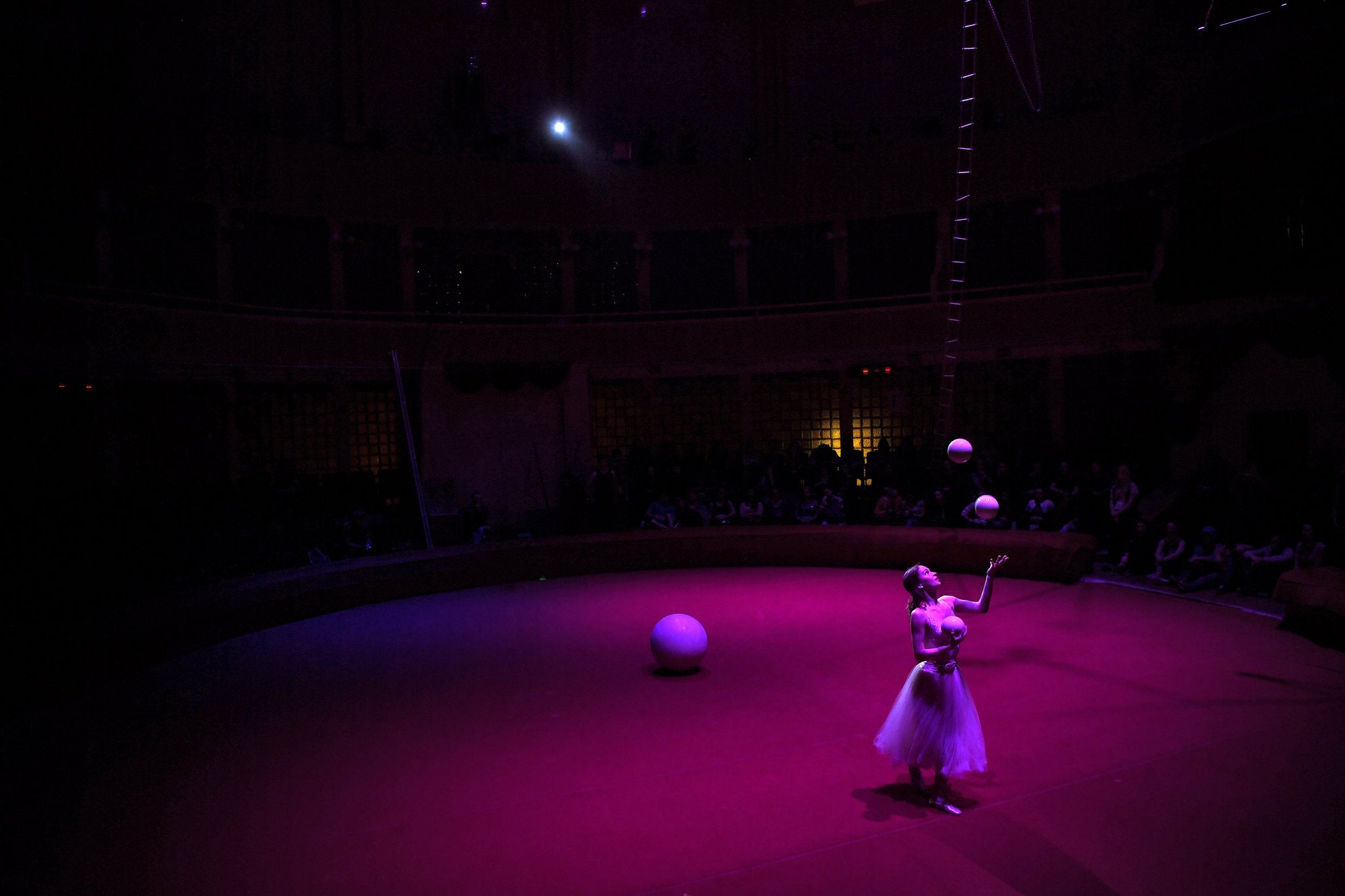
Your support helps us to tell the story
From reproductive rights to climate change to Big Tech, The Independent is on the ground when the story is developing. Whether it's investigating the financials of Elon Musk's pro-Trump PAC or producing our latest documentary, 'The A Word', which shines a light on the American women fighting for reproductive rights, we know how important it is to parse out the facts from the messaging.
At such a critical moment in US history, we need reporters on the ground. Your donation allows us to keep sending journalists to speak to both sides of the story.
The Independent is trusted by Americans across the entire political spectrum. And unlike many other quality news outlets, we choose not to lock Americans out of our reporting and analysis with paywalls. We believe quality journalism should be available to everyone, paid for by those who can afford it.
Your support makes all the difference.Ringling Brothers has shut down in the United States, but the big top lives on in Russia, which carries on a deeply-rooted circus tradition that soars above today’s geopolitical conflicts.
Created in 1927 by the Soviet People’s Commissariat of Education, the MN Rumyantsev State School of Circus and Variety Arts – a four-year programme with 180 students who attend free of charge – bills itself as the world’s first fully-fledged circus university.
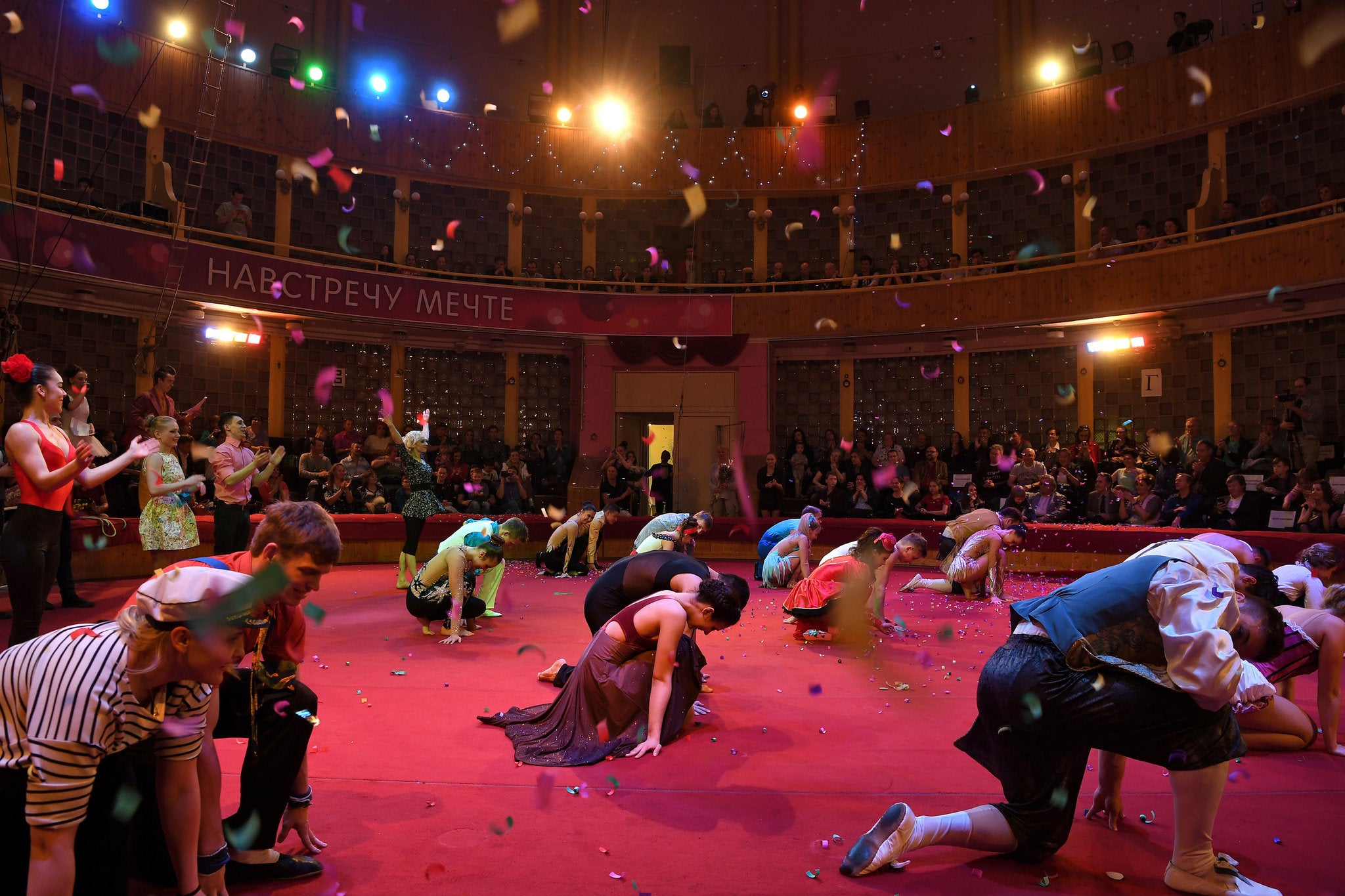
The curriculum at the Moscow Circus School, as it is commonly known, includes standard science and humanities subjects, but does not extend to working with animals. That is usually transmitted via family dynasties.
Competition to get into the school is nowhere near as fierce now as in Soviet times, when hundreds might apply for each spot.
For their finals performance, more than two dozen members of the school’s graduating class display hair-raising feats of flight and balance in a round-domed pink hall with a retro vibe.
Three students from Russia’s far corners prepped for a comic stunt act inspired by Louis XIV’s court. After the necessary stretching exercises, they described the circus’s lure.
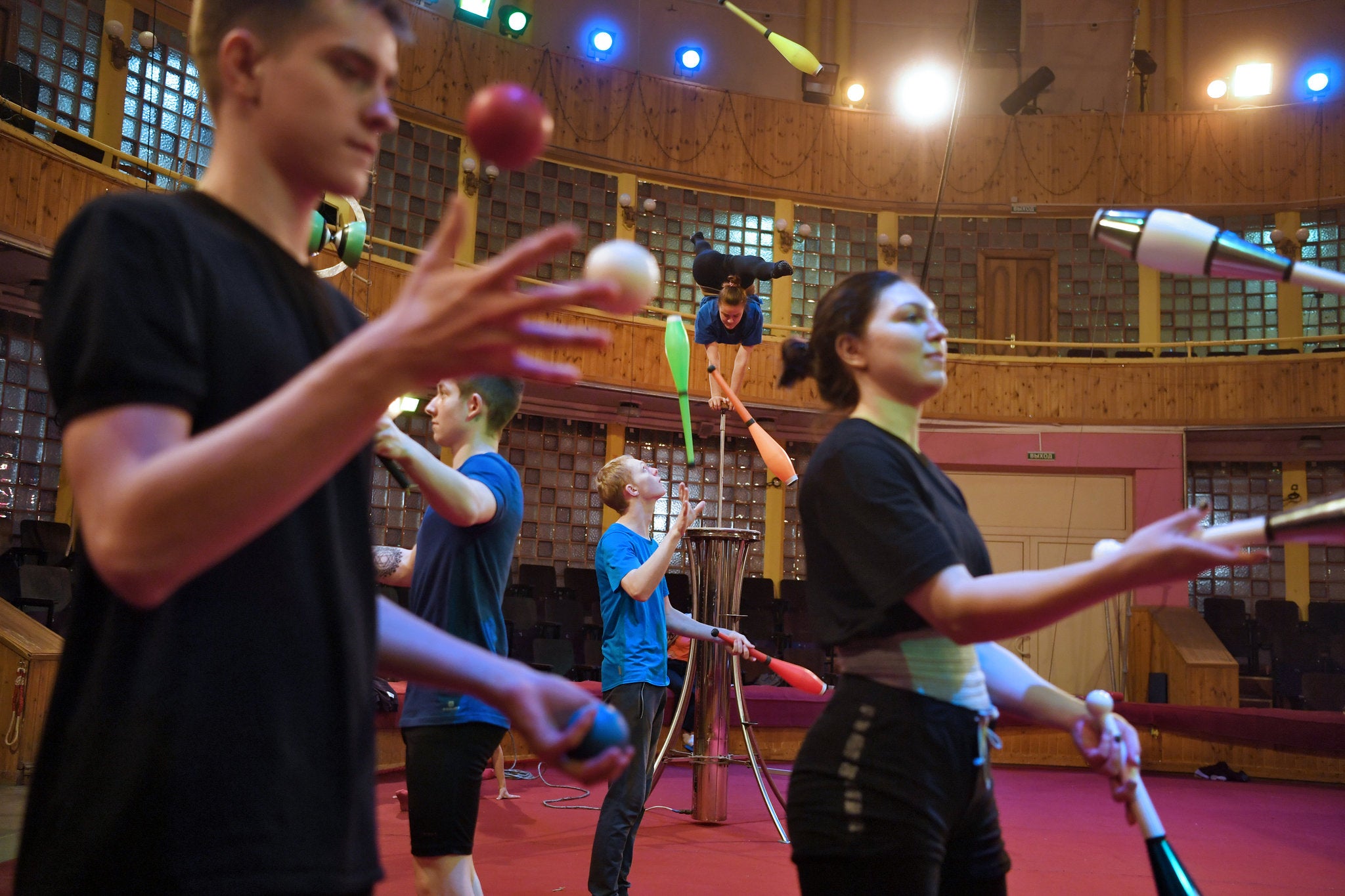
“It is a blast of emotion,” says Yulia Borodina, 19, from Arsenyev, a small city near China, who plays the coquette in an acrobatic ménage à trois. “You give to people, and they give back to you, and it is such a joy.”
One of Borodina’s partners, Artem Tkachenko, was born in Kazakhstan. His family moved to Lipetsk, a steel city in southern Russia, where he was dragged to a circus studio by his sister.
“I resisted and resisted, and then I ended up liking it,” he says. “When you come out into the outer ring and there is a crowd of viewers, it’s a unique feeling.”
His sister is a banker now, he adds, while “I dream of standing ovations”.
Denis Davydov, 21, a gangly juggler from Togliatti, a hardscrabble automotive centre on the Volga River, practices under the dome. He is aiming to beat the world record of 12 objects in the air – he got up to 11 four months ago.
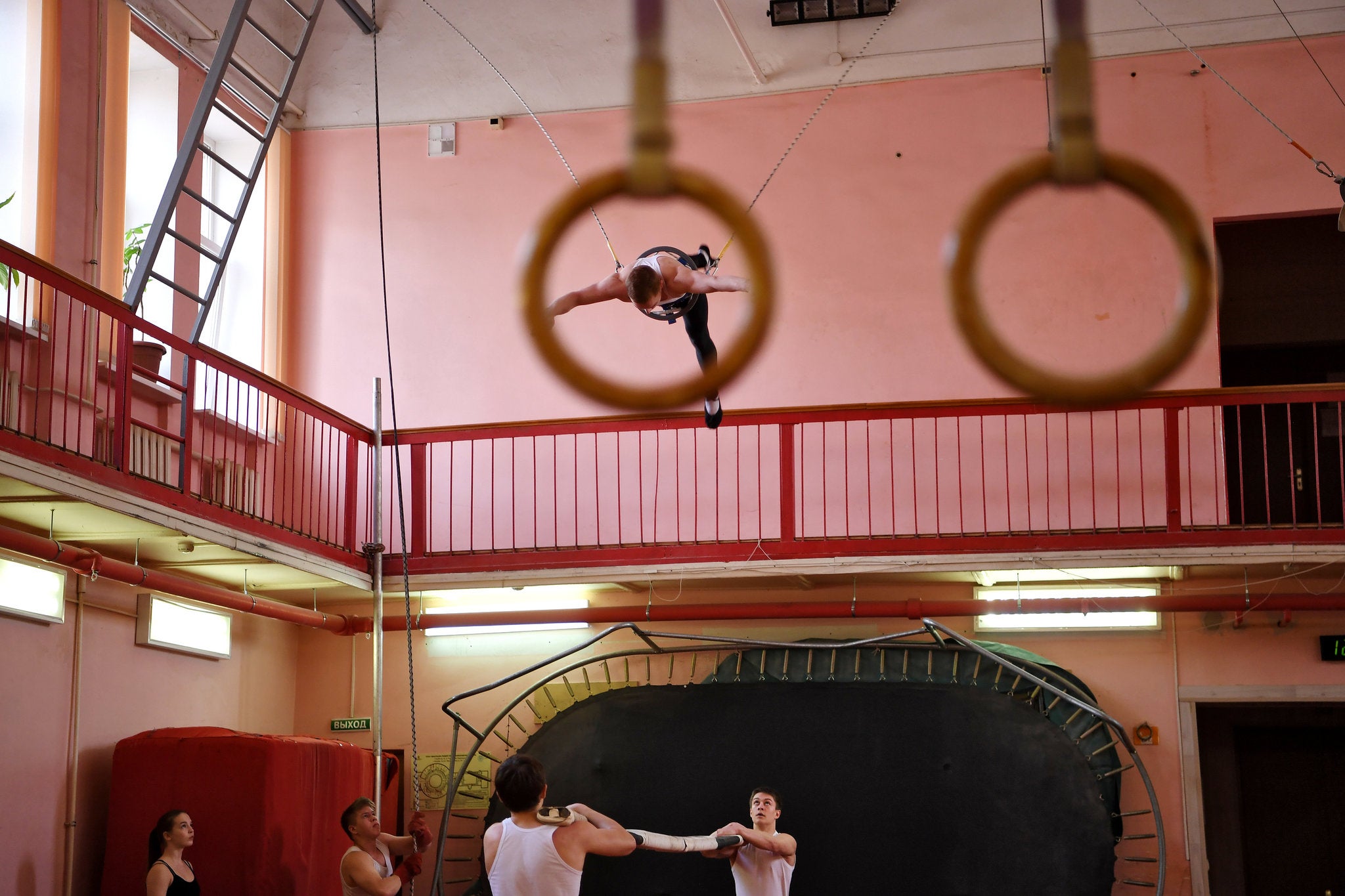
The hall is packed with family members and talent scouts, including Edgard Zapashny, director of the Moscow State Circus. Some students, dreaming of shots at Cirque du Soleil, also market themselves via Instagram and other social media. They include Ilya Salmov, 20, from Kazan in Tatarstan, who performs daring acrobatics in midair supported by only a couple of straps holding up his improbably muscular torso.
Scouts from Russia’s top circuses and several from abroad huddle to evaluate the students. Iouri Kreis, who runs an international talent agency in Winter Haven, Florida, treks annually to scout graduates for cruise ship gigs. Slava Nusinsky, a graduate who emigrated to Israel and created a circus scene there from scratch based on talent from the former Soviet Union, is readying his third circus festival in the port city of Ashdod.
Gia Eradze, a tall, commanding circus star who runs the Royal Circus that takes his name, is distressed about the closing of Ringling Brothers and other threats to America’s circus tradition. “It’s very sad, very sad,” he says.
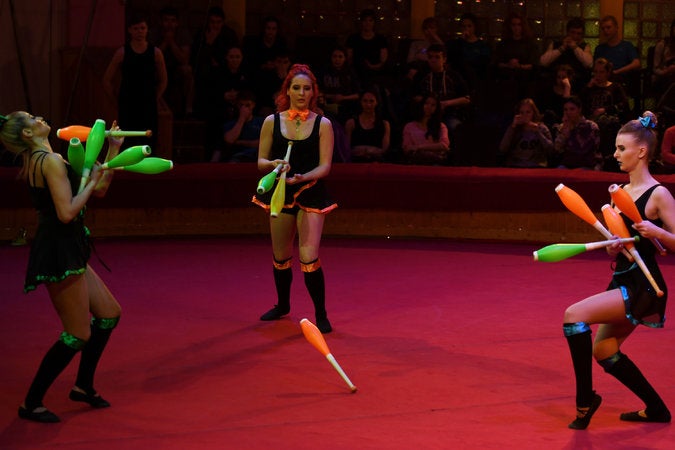
His pick from the graduating class is Tatyana Belova, 18, a masterful balancing artist from Yalta in Crimea, the Black Sea peninsula that was annexed by Russia from Ukraine in 2014.
Belova says she was drawn to the circus as a means of testing her limits, starting out at the age of eight. “I came to a performance, saw it and wanted to do it,” she explains.
In Soviet times, the circus toured as extensively as the ballet, generating hard currency revenues for the communist state. President Vladimir Putin has demonstrated his support for the Russian State Circus Company, which oversees over 40 permanent circuses nationwide, restoring some of its Soviet-era privileges.
Valentina Savina, the school’s director and author of a textbook about teaching the circus arts, sums up the power of the big top: “If ballet, music and theatre require age in order to understand their philosophy, circus is understandable to everyone, from young to old.”
“The circus is like one family — everyone helps each other,” he concludes.
© New York Times
Join our commenting forum
Join thought-provoking conversations, follow other Independent readers and see their replies
Comments